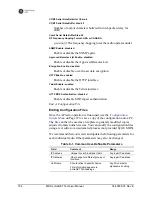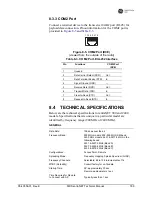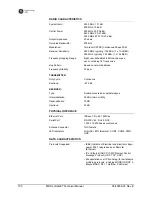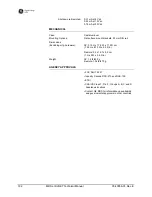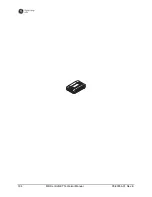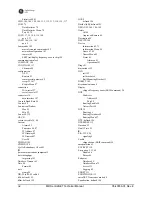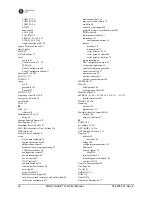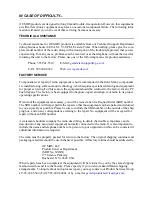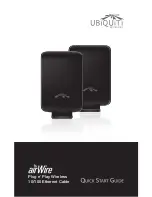
196
MDS entraNET Technical Manual
05-4055A01, Rev. E
DCE
—Data Communications Equipment. In data communications
terminology, this is the “modem” side of a computer-to-modem
connection. The transceiver
COM1
and
COM2
ports are set as DCE.
Decibel (dB)
—A measure of the ratio between two signal levels.
Frequently used to express the gain (or loss) of a system.
DES
—Data Encryption Standard. More information on DES is
available at
www.itl.nist.gov/fipspubs/fip46-2.htm
.
DHCP
—Dynamic Host Configuration Protocol. An Internet standard
that allows a client (that is, any computer or network device) to obtain
an IP address from a server on the network. This allows network
administrators to avoid the tedious process of manually configuring and
managing IP addresses for a large number of users and devices.
When a network device powers on, if it is configured to use DHCP, it
contacts a DHCP server on the network and requests an IP address. The
DHCP server provides an address from a pool of addresses allocated by
the network administrator. The network device may use this address on
a “time lease” basis, or indefinitely, depending on the policy set by the
network administrator.
DNP3
—Distributed Network Protocol 3. DNP3 is an industry-standard
protocol that was initially created for communication between electrical
substation devices. Today, this non-proprietary protocol is being widely
adopted for a variety of other applications. Although DNP3 is typically
employed in a client-server environment, this serial protocol is one of
only a few that allow peer-to-peer communication between devices
without the need for a
host computer
. It does this in the same way that
IP supports peer-to-peer communication in an Ethernet environment.
Encapsulation
—Process by which a complete data packet, such as
MODBUS frame or any other polled asynchronous protocol frame, is
placed in the data portion of another protocol frame (for example, IP) to
be transported over a network.
Typically this action is done at the receiving end, before being sent as an
IP packet to a network. A similar reversed process is applied at the other
end of the network extracting the data from the IP envelope, resulting in
the original packet in the original protocol.
Endpoint
—Ethernet or IP data equipment connected to the ports of the
transceiver.
Fade Margin
—The greatest tolerable reduction in average received
signal strength anticipated under most conditions. Provides an
allowance for reduced signal strength due to multipath, slight antenna
movement or changing atmospheric losses. A fade margin of 15 to
20 dB is usually sufficient in most systems.
Summary of Contents for MDS entraNET 900
Page 10: ...LA N CO M1 CO M2 PW R LIN K viii MDS entraNET Technical Manual 05 4055A01 Rev E...
Page 12: ...2 MDS entraNET Technical Manual 05 4055A01 Rev E LA N CO M1 CO M2 PW R LIN K...
Page 24: ...14 MDS entraNET Technical Manual 05 4055A01 Rev E LA N CO M1 CO M2 PW R LIN K...
Page 26: ...16 MDS entraNET Technical Manual 05 4055A01 Rev E LA N CO M1 CO M2 PW R LIN K...
Page 38: ...28 MDS entraNET Technical Manual 05 4055A01 Rev E LA N CO M1 CO M2 PW R LIN K...
Page 110: ...100 MDS entraNET Technical Manual 05 4055A01 Rev E LA N CO M1 CO M2 PW R LIN K...
Page 130: ...120 MDS entraNET Technical Manual 05 4055A01 Rev E LA N CO M1 CO M2 PW R LIN K...
Page 156: ...146 MDS entraNET Technical Manual 05 4055A01 Rev E LA N CO M1 CO M2 PW R LIN K...
Page 158: ...148 MDS entraNET Technical Manual 05 4055A01 Rev E LA N CO M1 CO M2 PW R LIN K...
Page 176: ...166 MDS entraNET Technical Manual 05 4055A01 Rev E LA N CO M1 CO M2 PW R LIN K...
Page 186: ...176 MDS entraNET Technical Manual 05 4055A01 Rev E LA N CO M1 CO M2 PW R LIN K...
Page 188: ...178 MDS entraNET Technical Manual 05 4055A01 Rev E LA N CO M1 CO M2 PW R LIN K...
Page 204: ...194 MDS entraNET Technical Manual 05 4055A01 Rev E LA N CO M1 CO M2 PW R LIN K...
Page 218: ...I 8 MDS entraNET Technical Manual 05 4055A01 Rev E...





